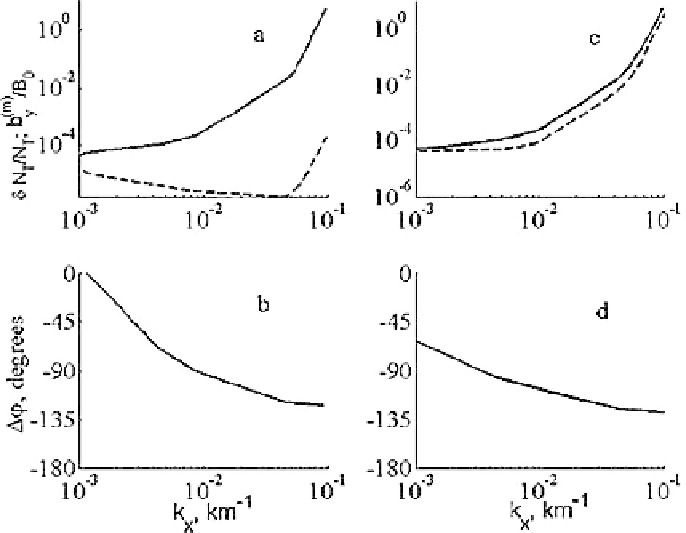Geoscience Reference
In-Depth Information
Fig. 12.3.
N
T
(
k
x
) modulation dependence on the transverse wavenumber of
the MHD-wave, reflected from the dayside ionosphere: (
a
) amplitude relation for
δN
T
/N
T
(the solid line) and
b
(
m
)
/B
0
(the dashed line) for the ground signal
y
b
(
g
)
x
=1nT;(
b
) the phase difference between the
N
T
variations and
b
(
g
x
; panels
(
c
)and(
d
)arethesameas(
a
)and(
b
) but for the nighttime ionosphere
10
−
6
b
(
g
x
.
2
π/
(300) km
−
1
the modulation rate is
δN
T
/N
T
≈
that at
k
x
≈
2
×
For the nighttime pulsations
Pi
2 at the typical amplitudes of
b
(
g
)
≈
10 nT
,
x
the magnitude of the expected effect is
δN
T
/N
T
≈
10
−
5
. Thus, according
to the numerical model, the modulation effects will be more clearly manifested
for daytime than for nighttime pulsations [4].
×
2
FMS-Wave
There is an additional possibility of a more effective coupling between an
MHD-wave and TEC-perturbations. FMS-wave incident on the ionosphere
produces, contrary to the transversal Alfven wave, compression and rarefac-
tion of the charged components. The expected modulation effects can be es-
timated as
b
B
0
The observed perturbations of electron concentration
δN
T
/N
T
≈
δN
T
N
T
≈
10
−
4
can be caused by FMS-waves in the magnetosphere with amplitudes of
2
×

Search WWH ::

Custom Search